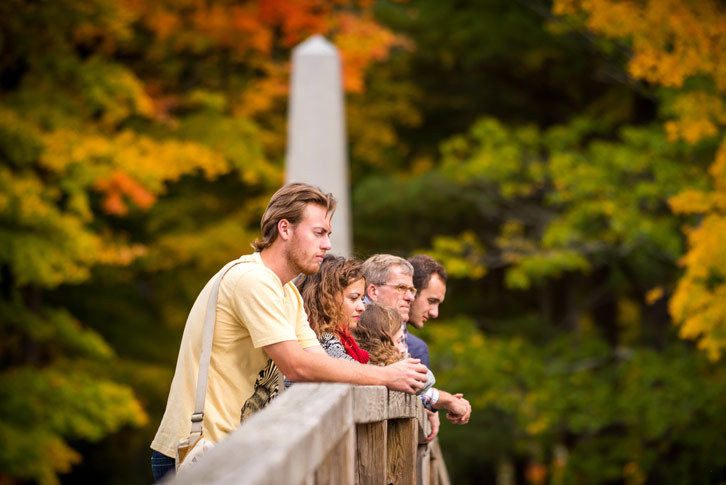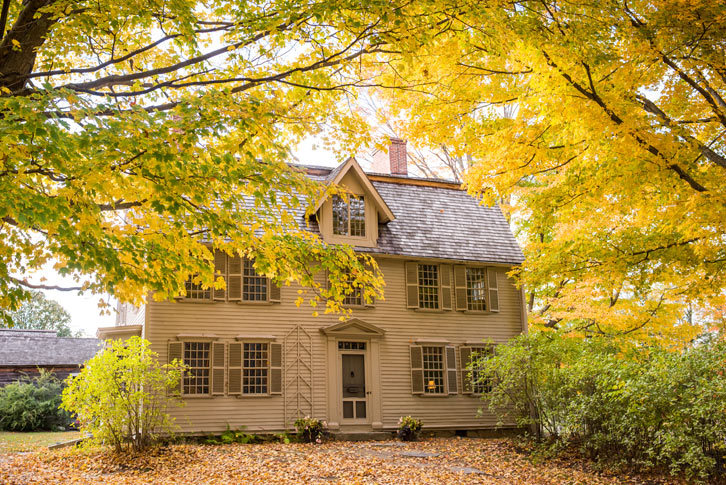“It is one thing to read about Walden Pond and have Thoreau describe it; it’s another when you get to walk all along the beach and run into the woods and see where Thoreau’s cabin was.” So wrote one of the students in my course on 19th-century writers of the American Renaissance after our field trip to Concord, Mass.
About a month into the course, we had already immersed ourselves in the works of Ralph Waldo Emerson and Henry David Thoreau, two key Transcendentalist thinkers and writers who helped fashion a new attitude toward nature: one more spiritual, personal and positive than that of their Puritan forebears. We were familiar with the finer points of Emerson’s Transcendentalist manifesto “Nature” and Thoreau’s first book, A Week on the Concord and Merrimack Rivers — which travels as much into young Henry’s mind as it does from Concord, Mass., to Concord, N.H. — when we headed two hours south to see where Emerson and Thoreau lived, worked and socialized with one another.
Our first stop, the Concord Museum, oriented us to the town and its illustrious past; the museum’s most significant holdings include the well-appointed study replete with books and furniture from the Emerson house (which sits just across the street), as well as the few simple possessions — bed, desk, chairs and walking stick — from the cabin Thoreau built on Emerson’s land a couple miles outside town.

Soon we were embarking on our own trek to Walden Pond and the site of Thoreau’s place in the woods. Each student spoke glowingly of this experience; one argued that “the study of literature should not be confined to the classroom, but should instead be spent in part amongst nature,” while another claimed he “could now see exactly where Transcendentalists … were coming from.”
In addition to Emerson and Thoreau, Concord was home — in the mid-19th century — to such notable women writers as Louisa May Alcott and Margaret Fuller, as well as to America’s first important novelist, Nathaniel Hawthorne. In fact, Hawthorne figured into another memorable part of the field trip: our visit to the Old Manse. A venerable 18th-century house built by the Emerson family in 1770, the Old Manse overlooks the revolutionary battlefield where “the shot heard ’round the world” was fired in 1775. Hawthorne and his bride, Sophia, moved into the Manse after they were married in 1842.
Touring the house, we could feel the presence of Concord’s literary icons. The second-floor study features the desk where Emerson wrote “Nature,” and a writing table where Hawthorne penned Mosses from an Old Manse. Perhaps most notably, the Old Manse’s grounds contain the garden Thoreau planted as a wedding gift for the Hawthornes to discover when they arrived home following their honeymoon.

It didn’t take long for Sophia Hawthorne to, quite literally, leave her mark on the house as well; with her wedding ring, she etched some lovely passages into two of the Manse’s windows, even getting Nathaniel to write a few words of his own on one of them. I’ve made this trip numerous times now — many alums cite it as one of the highlights of their English major — because, like most experiential learning, it brings authors to life in ways that reading their books cannot. And nowhere does Concord’s literary history come more alive for me than when I’m standing in front of these windows where the romantic Hawthornes stood — more than 160 years ago — and reading their words, still visible on the old panes of glass.
We ended our day at Sleepy Hollow Cemetery, which — on top of a hill in a magnificent natural setting — serves as the final resting place for Emerson, Thoreau and the Hawthornes. And yet, in the preceding hours, each of them had spoken to us through our exploration of the places that defined them. Walking through the garden at the Old Manse, one student imagined “Thoreau moving about the rows of plants and seeds, which seemed like a better place for him and his words than at a desk or in a parlor … ” For her — and for all of us who left the classroom for a day — this place served as “a legacy its previous inhabitants would have approved of, for, though they are no longer there, we find them in the way the river moved, how the garden grew, and in poetry on windowpanes” — all unexpected discoveries that deepened our understanding of how the place these writers called home shaped some of the most significant texts in American literature.
Patrick D. Anderson joined the faculty in 1977 and is the Gibney Distinguished Professor of Humanities. He holds an A.B. from the University of Notre Dame and an M.A. and a Ph.D. from the University of Michigan. He teaches courses in American studies, American literature, Native American culture, and film.